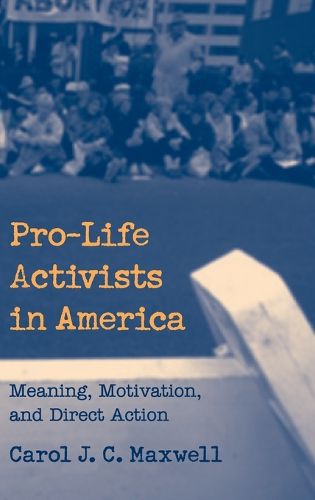Readings Newsletter
Become a Readings Member to make your shopping experience even easier.
Sign in or sign up for free!
You’re not far away from qualifying for FREE standard shipping within Australia
You’ve qualified for FREE standard shipping within Australia
The cart is loading…






Maxwell offers an oral history of pro-life direct activism in America from the late 1970s to the early 1990s. Through the stories of leaders and followers, men and women, Catholics and evangelicals, Carol Maxwell explores the complex beliefs and desires that gave rise to this activism, sustained, and eventually undid it. Maxwell’s interdisciplinary approach weaves theory from sociology, political science, anthropology, and moral philosophy. She pays special attention to several key issues: the role of the participants’ diverse concepts of salvation; concerns about social change; their unresolved grief; their personal experiences of abortion; and differences in men’s and women’s commitment to protest. The book offers a unique window into the minds of individual protestors as they shifted from conventional activism to direct action and gives an important account of the direct action movement as its initial commitment to Ghandian non-violence was broken by the lethal acts that accompanied its end.
$9.00 standard shipping within Australia
FREE standard shipping within Australia for orders over $100.00
Express & International shipping calculated at checkout
Maxwell offers an oral history of pro-life direct activism in America from the late 1970s to the early 1990s. Through the stories of leaders and followers, men and women, Catholics and evangelicals, Carol Maxwell explores the complex beliefs and desires that gave rise to this activism, sustained, and eventually undid it. Maxwell’s interdisciplinary approach weaves theory from sociology, political science, anthropology, and moral philosophy. She pays special attention to several key issues: the role of the participants’ diverse concepts of salvation; concerns about social change; their unresolved grief; their personal experiences of abortion; and differences in men’s and women’s commitment to protest. The book offers a unique window into the minds of individual protestors as they shifted from conventional activism to direct action and gives an important account of the direct action movement as its initial commitment to Ghandian non-violence was broken by the lethal acts that accompanied its end.